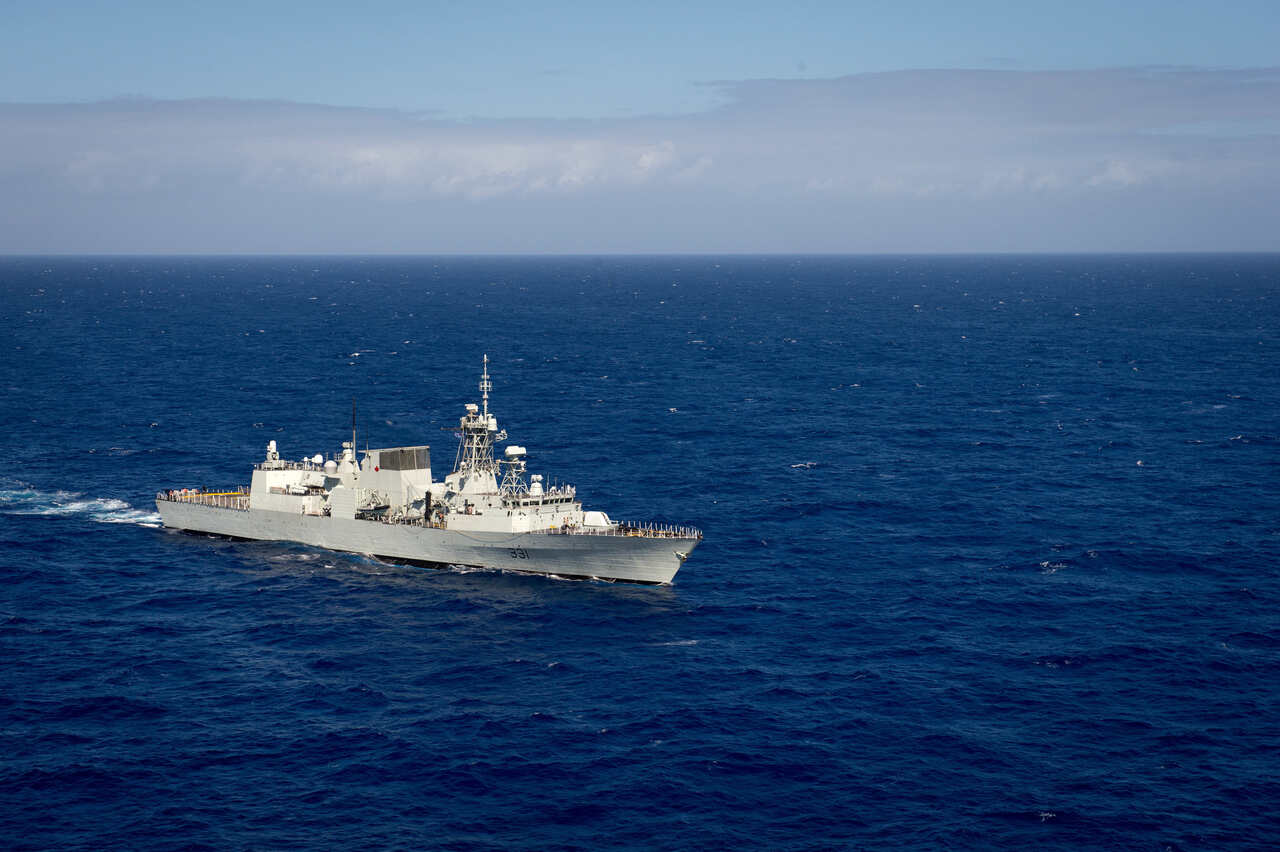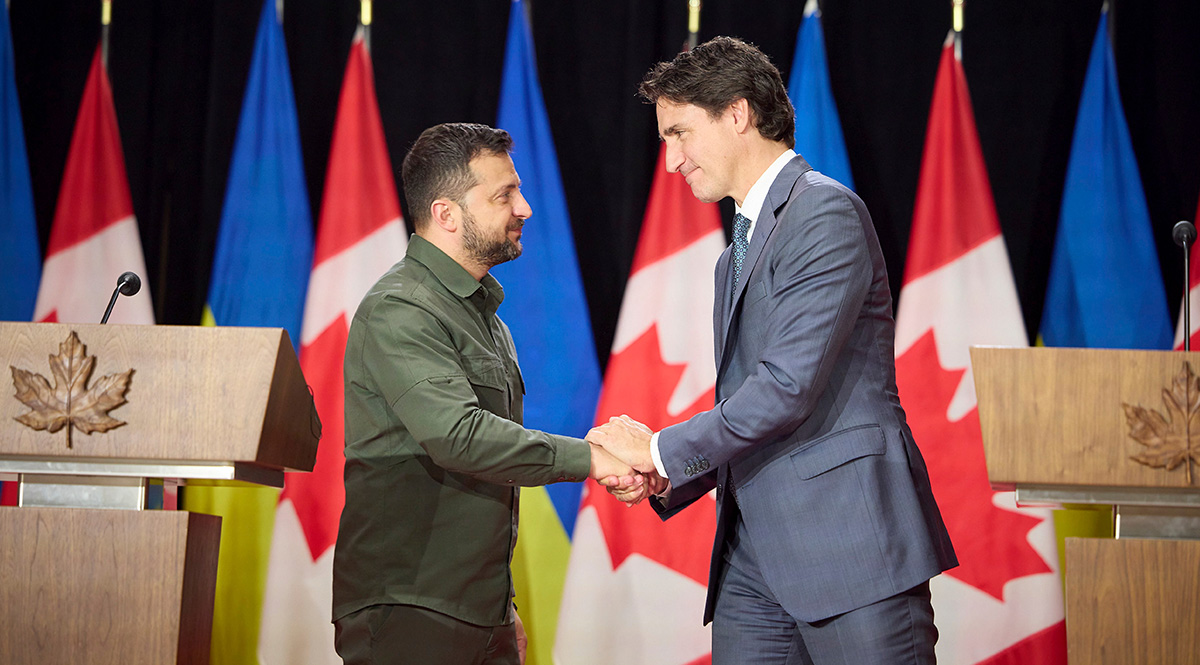Canada Updates its National Defence Strategy-Consequences for NATO
Canada’s updated defence strategy indicates that the main threats to its sovereignty are Russia and China. It also announces investment plans to develop Royal Navy forces and the ability to operate in the Arctic. The strategy’s implementation may strengthen NATO’s capabilities to operate on its northern and western flanks, however, a persistent problem is Canada’s low defence spending.
.jpg) Aleksiej Witwicki / Forum
Aleksiej Witwicki / Forum
In April 2024, Prime Minister Justin Trudeau’s Liberal government published an updated national defence strategy titled, “Our North Strong and Free: A Renewed Vision for Canada’s Defence (ONSF)”. This is the first updated to the strategy in seven years. It focuses on Canada’s efforts to strengthen its ability to defend its interests in three regions key to Canadian security—the Arctic, the Euro-Atlantic, and the Indo-Pacific.
Security Environment
The ONSF notes that Canada’s security environment is deteriorating. The most serious challenges to Canadian interests are climate change and the policies of Russia and China. The effect of climate change is causing ice to melt in the Arctic, which may turn the Arctic Ocean into a key route for maritime transport between Europe and East Asia. Increased traffic in this area poses a challenge to Canada’s ability to maintain its Arctic sovereignty.
The strategy emphasises that Russia, through its aggression against Ukraine, has violated the basic principles on which the international order is based. It describes Russia as a country that seeks to expand its strategic influence and one that will pose a challenge for generations to come. It points to Russia’s air and naval capabilities to project power to Europe and the Arctic, threatening North America.
The document stresses that China, which seeks to reorient the international order on a global scale, has ambitions to become a “polar power”. It mentions China’s growing capabilities to operate in the Arctic, such as the development of a fleet of submarines and intelligence-research vessels, which, among others, monitor Canadian military infrastructure in the region. Canada and its partners are also subject to Chinese pressure when exercising their sovereign right to freedom of navigation in the South China Sea and Taiwan Strait. The threats posed by Russia and China are articulated much more clearly than in the previous Liberal governments’ defence strategy from 2017. The ONSF warns that both countries are strengthening their cooperation in the Northwest Pacific and Arctic regions.
The ONSF mentions that strategic threats to Canada also stem from North Korea (cooperation with Russia and proliferation of nuclear weapons), Iran (destabilisation of the region), and terrorist groups in the Middle East. Other challenges include the development of AI and cyber and space technologies, which can lead to an increased number of hybrid attacks.
Approach to Collective Defence
As a country with limited military potential, Canada attaches great importance to allied security guarantees and multilateral cooperation within NATO. The ONSF emphasises that in facing challenges in the Arctic and North America, Canada also intends to strengthen its capabilities to defend the Alliance’s Northern and Western flanks. Plans to develop the Canadian Armed Forces (CAF) capabilities to defend maritime areas and airspace in these strategic areas is in parallel with this goal. The document clearly signals that closer cooperation with the U.S. and European partners will be necessary. The aim is to accelerate the modernisation of obsolete Canadian forces, which will strengthen NATO’s ability to monitor the activities of Russia and China in the Arctic. The strategy states that the ability to defend Canada and the North American continent is a necessary condition for CAF to take effective actions and support allies in other regions. CAF involvement on NATO’s Eastern Flank remains in Canada’s strategic interest. They will be able to act independently and attack targets from a greater distance than the enemy. The intention to strengthen cooperation with partners in the Indo-Pacific was also confirmed.
Expenses and Investments
The ONSF assumes that CAF will be able to quickly detect threats and act in the face of a possible attack. The armed forces are to be increased to 71,500 soldiers (up by 3,500) and 30,000 reservists, which requires more effectiveness of the recruitment process among Canada’s 39.7 million inhabitants. The strategy indicated that defence spending is to increase from 1.4 % to 1.76% of GDP by 2030 (from about $30 billion in 2023 to more than $50 billion). Despite plans to increase funds for modernisation, the authorities announced cuts in the defence budget by $810 million in 2024-2025, $851 million in 2025-2026, and $907 million in 2026-2027. The overall expenditure presented in the period of the ONSF will not reach the 2% of GDP level that as of 2024 the NATO allies consider as the necessary minimum. However, under pressure from allies (including the U.S.), Trudeau announced in June 2024 that Canada would achieve the level of 2% GDP by 2032. The priority is to increase threat-detection capabilities by, among others, modernising its fleet.
Canada is also emphasising the modernisation of elements of the North American integrated air and missile defence system (NORAD). Two radar installations will be built together with the U.S. (the first one is planned in the province of Ontario in 2028), which will strengthen the system’s ability to detect potential attacks from the Alaska direction. The ability to detect threats from space is to be strengthened by a new ground satellite station in the Arctic. The Trudeau government also plans to purchase aircraft equipped with early warning systems (estimated at $5.9 billion).
The potential to operate in the Arctic is to be increased by the use of helicopters (costing about $18.4 billion), vehicles adapted to Arctic conditions, and icebreakers. Construction of icebreakers will be one of the main tasks of the trilateral cooperation with the U.S. and Finland. Defence capabilities are to be strengthened primarily by modernising the obsolete fleet of four submarines. In July 2024, the Trudeau government began acquiring up to 12 new conventionally powered submarines ($44 billion). The strategy indicates that their mission will include not only responding to threats in Canada’s neighbourhood but also projecting power away from its territory. At the same time, the ONSF vaguely signals the possibility of equipping the Royal Air Force and Royal Navy with the ability to precisely attack targets from long distances. Generally, it also refers to strengthening the potential of land forces with artillery systems, tanks, and infantry fighting vehicles (modernisation or replacement). Although it emphasises the importance of heavy weapons systems such as tanks in modern conflicts, the strategy considers the need to increase the number of lighter, armoured combat vehicles as crucial for the implementation of operations within NATO.
Conclusions and Perspectives
Compared to the previous Liberal defence strategy from 2017, the ONSF places greater emphasis on the need to deter Russia and the ability to respond to threats from China. This reflects trends in allied security policies, including those of the U.S., and the priorities indicated in the new NATO strategy.
By strengthening the ability to detect threats in airspace and outer space, Canada can contribute to increasing the credibility of the U.S. nuclear deterrent, which is an important element in deterring Russia from aggression against NATO. New submarines will also make it easier to detect and combat threats, including enemy submarines capable of carrying nuclear weapons, which will also strengthen deterrence. Increasing the ability to operate in the Arctic will be important for NATO.
Some of the announced plans, however, are at an early planning stage. This includes the new submarines (the first ones will enter service in 2035 at the earliest), the possibility of using helicopters in the Arctic, and increasing the ability to perform long-range precision strikes. Implementing this will be difficult due to insufficient investment expenditures. Along with overall spending of less than 2% of GDP, the announced defence cuts in the current security situation will weaken Canada’s allied credibility, at least politically. Strengthening the battlegroup in Latvia (from about 1,000 to 2,200 soldiers) will remain a priority for Canada, but the problem will be keeping the rest of the land forces ready to provide the necessary support in Europe in the event of a conflict with Russia. This may also challenge the credibility of Canada’s presence in the region. To prevent this, Canada will have to provide appropriate support for its troops by cooperating with its allies, including Poland. The Canadian authorities should also speed up decisions on investments in capabilities, especially the ability to precisely attack targets from long distances, which may strengthen Allied credibility in deterring Russia and bolster the Canadian presence on NATO’s Eastern Flank.





